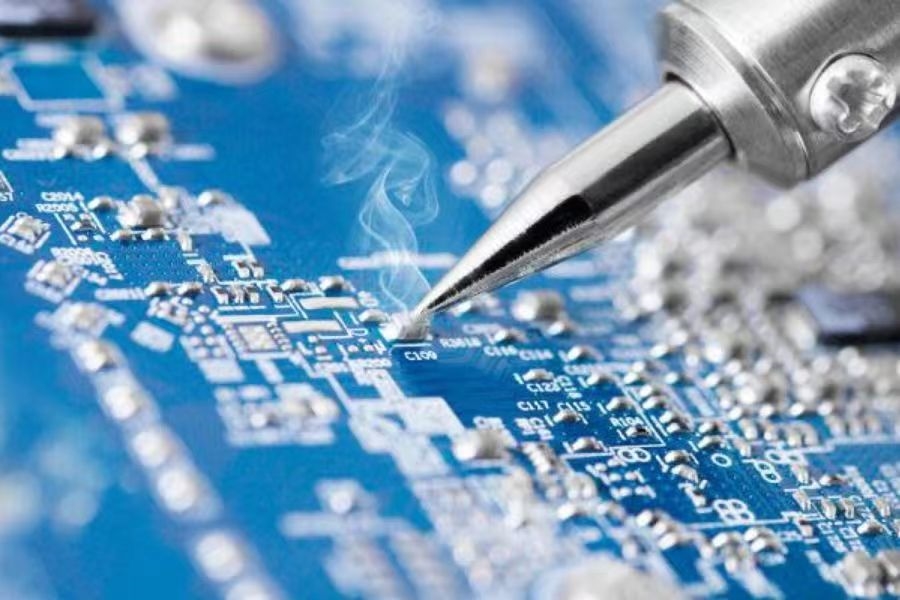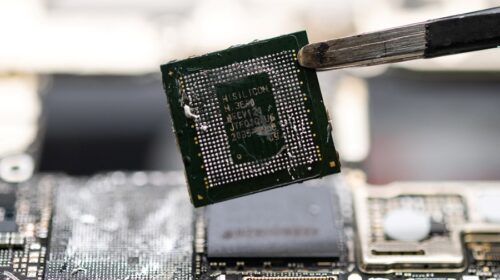Daylight ahead for China’s battered semiconductor sector?

Interim results from Chinese semiconductor companies suggest change for the better lies ahead for this group
By Research-Select
Major Chinese microchip maker Hua Hong Semiconductor Ltd. (1347.HK; 688347.SH) went public on Shanghai’s Nasdaq-style STAR Market on Monday, raising 21.2 billion yuan ($2.96 billion). That nifty sum made it the largest IPO this year on the A-share market, and the third largest in the STAR Market’s history, behind only Semiconductor Manufacturing International Corp. (SMIC) (0981.HK; 688981.SH) and Beigene Ltd. (6160. HK; 688235.SH; BGNE.US).
The company’s shares initially surged more than 15% on their debut day, before retreating to close up 2% from their IPO price of 52 yuan, perhaps reflecting ambivalent investor sentiment towards China’s microchip sector.
Hua Hong’s indecisive debut, coupled with recent interim results previews from other Chinese chipmakers, provide a snapshot of current sentiment towards China’s complex semiconductor sector and its many moving parts.
Chip-manufacturing equipment makers performed well in the first half of the year, benefitting from an ongoing trend of “domestic substitution” for imported products that have been limited by Western restrictions. After peaking over the last two years, capital expenditure by global chipmakers worldwide began to fall in 2023, though domestic chip-manufacturing equipment makers did well in the first two quarters.
A leading domestic semiconductor equipment maker said it expected to report a net profit of 1.67 billion yuan to 1.93 billion yuan for the first half of this year, up 121% to 155% from 2022. It realized a net profit of 1.08 billion yuan to 1.33 billion yuan in the second quarter alone, up 82% to 126% compared with the first quarter.
Successfully destocked
Global memory chip makers are showing the clearest signs of bottoming out from the sector’s recent downturn. After experiencing sharp declines and hitting new lows in their latest cycle, overseas memory chip manufacturers lowered their output to support prices. As a result, memory chip prices bottomed out and stabilized starting in May. Recently released financial results from the group show their year-on-year price declines slowed significantly in the second quarter, with profit growth up 27% quarter-on-quarter. Market watchers expect DRAM prices to rebound in the second half of the year, with DRAM and NAND flash prices expected to rise 7% and 5%, respectively, in the third quarter.
LED driver chips are also at the forefront of a destocking trend, and have entered a new stage of inventory replenishment and rising prices. As the earliest integrated circuit (IC) type making such an adjustment, LED driver chips have completed their inventory destocking, and most products now have healthy inventory levels of eight to 10 weeks.
But the destocking process has lagged in other categories like microcontrollers, radio frequency, simulation and camera image sensors (CIS), which are all related to smartphones. A leading Chinese CIS company said it would report a net profit of 128 million yuan to 192 million yuan in the first half of this year, down by a sharp 91.5% to 94.3% year-on-year. That figure, combined with earlier data, means the company recorded a net loss in the second quarter. Thus, it’s clear this sector is still in the destocking stage and has yet to start recovering significantly.
TF International analyst Guo Minqi believes that Apple Inc. (AAPL.US) is actively adopting 3D printing technology, and that some titanium mechanical parts for its upcoming Apple Watch Ultra will incorporate such technology. The technology’s applications in aerospace, weaponry and in creating lighter spare auto parts make it quite versatile, but it has yet to find large-scale civilian uses due to its high costs.
But as the technology matures and equipment and material costs start to come down, 3D printing technology has begun to enter civilian applications. Apple’s potential use of the technology in its Apple Watch Ultra could mark its official entry to the mass civilian market in areas such as consumer electronics, which could become a major turning point worthy of investor attention.
This article was originally published by Research-Select, a research sharing platform for buy-side investors.
This commentary is the views of the writer and does not necessarily reflect the views of Bamboo Works
To subscribe to Bamboo Works free weekly newsletter, click here






